Barrett MRAD SMR .300 Win Mag Bolt Action Rifle Fixed Stock 26" Barrel, Black – 18511 For Sale
$4,385.99
The Barrett MRAD SMR .300 Win Mag Bolt Action Rifle, model 18511, is a high-performance firearm featuring a 26-inch barrel and a fixed stock, all finished in sleek black. Unlike the standard MRAD, which offers interchangeable barrels, the SMR model is dedicated to a single caliber, focusing on precision and stability with its free float barrel design secured by a standard barrel nut within the upper receiver. With added features such as a vertically adjustable cheek piece and customizable length of pull via separate spacers, the rifle prioritizes user comfort and adaptability. These enhancements make the firearm more streamlined and lighter, reducing its weight by nearly 2½ pounds and shortening it by an inch compared to the standard model. The Barrett MRAD SMR is ideal for shooters looking for a versatile rifle that excels in precision and performance with its specialized design.
What is the difference between the Barrett MRAD and SMR?
The difference between the Barrett MRAD (Multi-Role Adaptive Design) and the Barrett SMR (Single Mission Rifle) primarily lies in their intended use, design flexibility, and features:
1. **Intended Use**:
– **MRAD**: Designed as a multi-caliber, highly adaptable sniper rifle for military and law enforcement, offering versatility across different operational needs.
– **SMR**: Designed as a more focused, purpose-driven rifle, optimized for a specific caliber and role, typically for precision shooting or sniper applications without the same degree of modularity.
2. **Modularity**:
– **MRAD**: Highly modular, allowing for quick barrel changes between various calibers. This feature makes the MRAD suitable for different mission profiles and distances.
– **SMR**: Generally less modular compared to the MRAD, focusing more on precision within its designated caliber and role.
3. **Barrel and Caliber Options**:
– **MRAD**: Supports multiple calibers (e.g., .338 Lapua Magnum, .300 Winchester Magnum, etc.), allowing operators to switch barrels easily to adapt to specific mission requirements.
– **SMR**: Typically chambered for specific calibers suited for its intended range and mission, often lacking the quick-change barrel feature.
4. **Design and Features**:
– **MRAD**: Features a fully adjustable folding stock, ambidextrous controls, and advanced ergonomics to accommodate a wide range of shooter preferences and shooting positions.
– **SMR**: While still designed for high accuracy and performance, it often adopts a more traditional or simplified design focused on its specific mission requirements. Adjustability may be more limited compared to the MRAD.
Overall, the MRAD is distinguished by its adaptability across different scopes of missions, while the SMR aims for specialization and precision within a set role.
Can civilians buy Barrett MRAD?
Yes, civilians can purchase the Barrett MRAD, as it is available for civilian sale. However, buyers must comply with all federal, state, and local laws regarding firearm ownership and purchases.
Is Barrett MRAD worth it?
The Barrett MRAD (Multi-Role Adaptive Design) is a high-precision sniper rifle known for its modularity, accuracy, and adaptability to different calibers and operational needs. Whether it is “worth it” depends on several factors:
1. **Purpose**: If you require a military-grade sniper rifle for professional use in law enforcement or military operations, the MRAD’s precision, versatility, and durability can be highly beneficial.
2. **Budget**: The MRAD is a high-end firearm and comes with a significant price tag. If you’re a civilian enthusiast or a competitive shooter with the budget to spend, it might be a worthwhile investment due to its versatility and precision.
3. **Modularity Needs**: One of the key features of the MRAD is its ability to switch calibers, making it suitable for various missions and conditions. If this level of adaptability is important to you, the MRAD stands out.
4. **Competitive Alternatives**: Consider other rifles in the same category. There are several other high-end precision rifles available that might meet your specific needs at a different price point.
If these factors align with your requirements and objectives, the Barrett MRAD could be worth it for you. However, for general or less specialized use, there may be more cost-effective options available.
What is an SMR rifle?
An SMR rifle, or Squad Marksman Rifle, is a type of firearm designed to fill the role between that of a standard infantry rifle and a sniper rifle within a military squad. These rifles are typically semi-automatic or have selective fire capabilities, and they often feature enhanced optics for better accuracy at longer ranges than standard issue rifles. The role of an SMR is to support a squad by engaging targets at an extended range with higher precision.
Does US military use MRAD?
Yes, the US military uses MRAD (Milliradian). MRAD is a unit of angular measurement commonly used by military and law enforcement snipers for calculating distances and making adjustments to their rifle scopes. It is a standard method for sighting and aiming precision rifles.
What are the advantages of MRAD?
The advantages of MRAD (Milliradian) include:
1. **Precision**: MRAD is a unit of angular measurement that allows for precise adjustments in shooting and optics, making it beneficial for tasks requiring high accuracy.
2. **Universality**: It is a metric-based system that is widely used internationally, allowing for easier communication and coordination among shooters and professionals from different countries.
3. **Ease of Calculation**: The metric system simplifies conversions and calculations, which can be particularly useful in various applications like ballistics and long-range shooting.
4. **Consistency**: With MRAD, shooters can make consistent and repeatable adjustments, which is crucial for tasks like dialing in scopes or aiming corrections.
5. **Versatility**: MRAD can be used in various fields beyond shooting, including engineering, surveying, and optics, due to its precise nature.
Overall, MRAD provides an efficient and standardized means of measurement for applications requiring high precision and accuracy.
Why is 50 BMG illegal?
The .50 BMG (Browning Machine Gun) cartridge is not inherently illegal in all jurisdictions, but it is subject to specific regulations and restrictions in certain areas due to its power, range, and potential for damage. Here are some reasons why it might be restricted or illegal in certain places:
1. **High Power and Long Range:** The .50 BMG is a very powerful cartridge capable of long-range shooting. Its power can penetrate armor and cause significant damage, raising concerns about potential misuse.
2. **Potential for Misuse:** Because it can penetrate targets that typical small arms can’t, there is a concern that it could be used in criminal activities or against targets like law enforcement vehicles.
3. **Regulations for Civilian Use:** Certain states or countries have laws that regulate or outright ban civilian ownership of firearms capable of firing the .50 BMG due to its military origins and potential for use in disruptive activities.
4. **Public Safety Concerns:** The potential risk to public safety from high-velocity, long-distance shots capable of penetrating significant barriers is another reason for restrictions.
Keep in mind that laws vary widely, so it’s crucial for individuals to check the specific regulations in their area regarding the ownership and use of .50 BMG firearms and ammunition.
How accurate is the Barrett Mrad?
The Barrett MRAD (Multi-Role Adaptive Design) is highly regarded for its accuracy, particularly among military and law enforcement snipers as well as long-range shooting enthusiasts. While specific accuracy can depend on various factors such as ammunition, environmental conditions, and the shooter’s proficiency, the MRAD is designed to consistently deliver sub-MOA (Minute of Angle) accuracy. This means it is capable of shooting groups smaller than 1 inch at 100 yards under optimal conditions. Its design allows for a high degree of precision and adaptability, contributing to its reputation as a reliable and accurate precision rifle.
Who uses Barrett Mrad?
Barrett MRAD (Multi-Role Adaptive Design) rifles are primarily used by military and law enforcement agencies around the world. They are favored for their modularity, precision, and long-range capabilities. Additionally, some civilian long-range shooting enthusiasts and competitive shooters might also use them where legally permitted.
Is 300 PRC better than 338 Lapua?
The comparison between the 300 PRC (Precision Rifle Cartridge) and the 338 Lapua Magnum depends on specific use cases and preferences. Here are some key points to consider:
1. **Ballistics and Performance:**
– **300 PRC:** Known for its high ballistic efficiency and consistency, especially at long range. It is designed to use heavy .30 caliber bullets with high ballistic coefficients, making it suitable for precision shooting and hunting at extended distances.
– **338 Lapua Magnum:** Offers more power and larger bullet sizes, making it effective for extremely long ranges and when greater terminal performance on large game or targets is required.
2. **Availability and Cost:**
– **300 PRC:** Generally more affordable ammunition and components compared to the 338 Lapua. It is becoming increasingly popular, which may improve availability over time.
– **338 Lapua Magnum:** Likely to be more expensive due to the larger size and specialized nature. It is well-established in long-range shooting circles.
3. **Recoil and Shootability:**
– **300 PRC:** Typically has less recoil compared to the 338 Lapua, making it more manageable for some shooters, especially in lighter rifles.
– **338 Lapua Magnum:** Known for substantial recoil, which can affect shootability in lighter platforms without proper recoil mitigation.
4. **Use Cases:**
– **300 PRC:** Ideal for long-range hunting, target shooting, and competitions where precision is key.
– **338 Lapua Magnum:** Suited for very long-range engagements, military applications, and hunting large game at distance.
Ultimately, determining which cartridge is “better” depends on what you value more—less recoil and cost (300 PRC) or maximum power and range capabilities (338 Lapua). Each has its own advantages depending on the scenario.
What does MRAD stand for Barrett?
MRAD in the context of Barrett refers to the Barrett MRAD rifle, where MRAD stands for “Multi-Role Adaptive Design.”
Are carbine rifles less accurate?
Carbine rifles are not inherently less accurate than longer rifles, but they can have different characteristics that may influence perceived accuracy. Carbines typically have shorter barrels, which can affect factors like velocity and sight radius. A shorter sight radius can make aiming more challenging, and reduced velocity might affect trajectory at longer distances. However, within typical engagement ranges and when used properly, carbines can be quite accurate and effective. Ultimately, their accuracy often depends on the design, quality, and intended use, as well as the user’s skill and the conditions of use.
What is the difference between SMR and traditional nuclear reactors?
The primary differences between Small Modular Reactors (SMRs) and traditional nuclear reactors are as follows:
1. **Size and Output:**
– **SMRs:** These are smaller in size and have a lower electrical output, typically producing up to 300 megawatts of electricity per unit, which makes them more suitable for smaller grid systems or remote locations.
– **Traditional Nuclear Reactors:** These are larger and can produce over 1,000 megawatts, designed for large-scale electricity generation.
2. **Design and Construction:**
– **SMRs:** They are designed to be modular, allowing for factory fabrication and easy transportation to the site where they can be assembled. This potentially reduces construction time and costs.
– **Traditional Nuclear Reactors:** They are constructed on-site, which generally involves longer construction times and higher costs.
3. **Deployment Flexibility:**
– **SMRs:** Their modularity and smaller size make them more adaptable to a variety of sites, including remote or less accessible areas. They can also be scaled by adding additional modules as needed.
– **Traditional Nuclear Reactors:** Their deployment is limited to locations that can support large infrastructure and require significant land and resource commitments.
4. **Safety and Operation:**
– **SMRs:** Often incorporate advanced safety features, including passive safety systems that do not require human intervention or power to operate in the event of an emergency.
– **Traditional Nuclear Reactors:** They rely on more extensive active safety systems but have a long history of safe operation with established regulatory frameworks.
5. **Economic and Financial Aspects:**
– **SMRs:** They offer potentially lower upfront capital costs due to smaller design and modular construction, which can be financially appealing, especially in regions with limited capital investment capability.
– **Traditional Nuclear Reactors:** Typically require significant upfront investment, but their larger size can offer economies of scale with lower operational costs per unit of energy generated over the long term.
6. **Regulatory and Licensing:**
– **SMRs:** Being a newer technology, they may face evolving regulatory frameworks, although efforts are being made to streamline and standardize licensing processes.
– **Traditional Nuclear Reactors:** Have well-established regulatory processes but can be complex and lengthy.
Both technologies play important roles in the diversification and decarbonization of energy systems.
Why is MRAD better than MOA?
The preference for MRAD (Milliradian) over MOA (Minute of Angle) largely depends on the user’s needs and familiarity. Here are some reasons why some people consider MRAD to be better than MOA:
1. **Metric System Compatibility**: MRAD is based on the metric system, which makes it easier to integrate with metric-based distance measurements (meters, kilometers) commonly used worldwide, including most military and international shooting scenarios.
2. **Simplicity in Calculations**: MRAD simplifies calculations in the field. Since MRAD is a decimal system (1 MRAD equals 10 cm at 100 meters), conversions and calculations are often more straightforward compared to MOA, which is based on a fraction of an inch (1 MOA equals approximately 1.047 inches at 100 yards).
3. **Uniform Consistency**: Many shooters find MRAD easier to learn and adapt to, as measurements and adjustments can be more intuitively scaled across various distances without converting units (centimeters/meters).
4. **Wide Adoption for Tactical Use**: MRAD scopes are increasingly popular among military and tactical users, leading to a wider array of compatible equipment and resources for MRAD than for MOA.
Ultimately, the choice between MRAD and MOA is subjective and often comes down to personal preference, existing skills, and the specific requirements of the shooting activity. Both systems are effective for precision shooting with proper understanding and practice.
What does the MRAD stand for?
MRAD stands for Milliradian.
| Product Line | MRAD SMR |
|---|---|
| Action | Bolt Action |
| Overall Length | 47.4" |
| Sights | Optic Ready |
Be the first to review “Barrett MRAD SMR .300 Win Mag Bolt Action Rifle Fixed Stock 26" Barrel, Black – 18511” Cancel reply
Related products
Barrett MRAD SMR
Barrett MRAD SMR .338 Lapua Bolt Action Rifle Fixed Stock 26" Barrel, Tungsten Gray – 18504
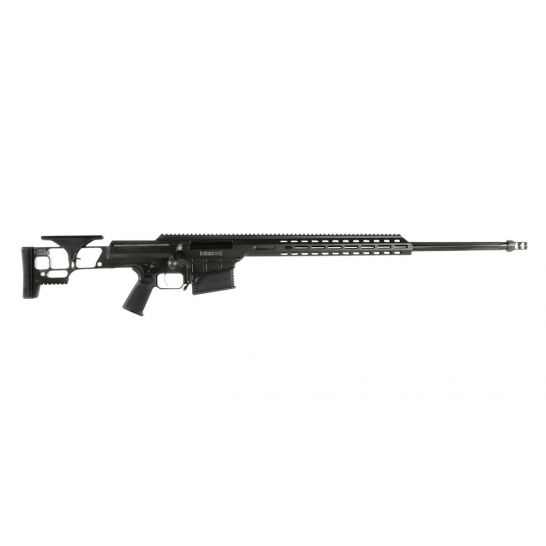
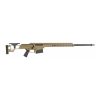
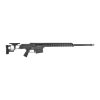
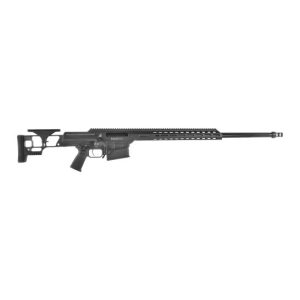
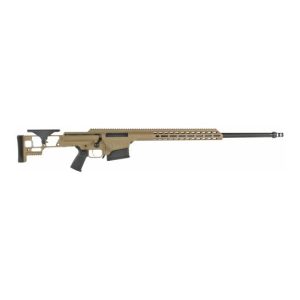
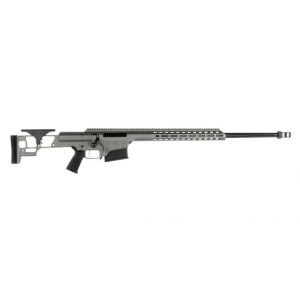
Reviews
There are no reviews yet.